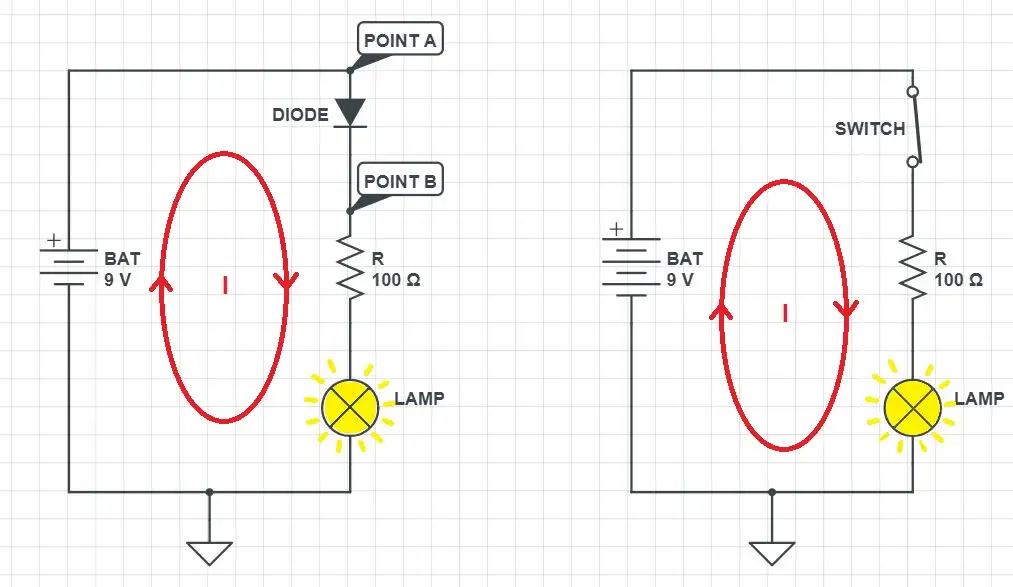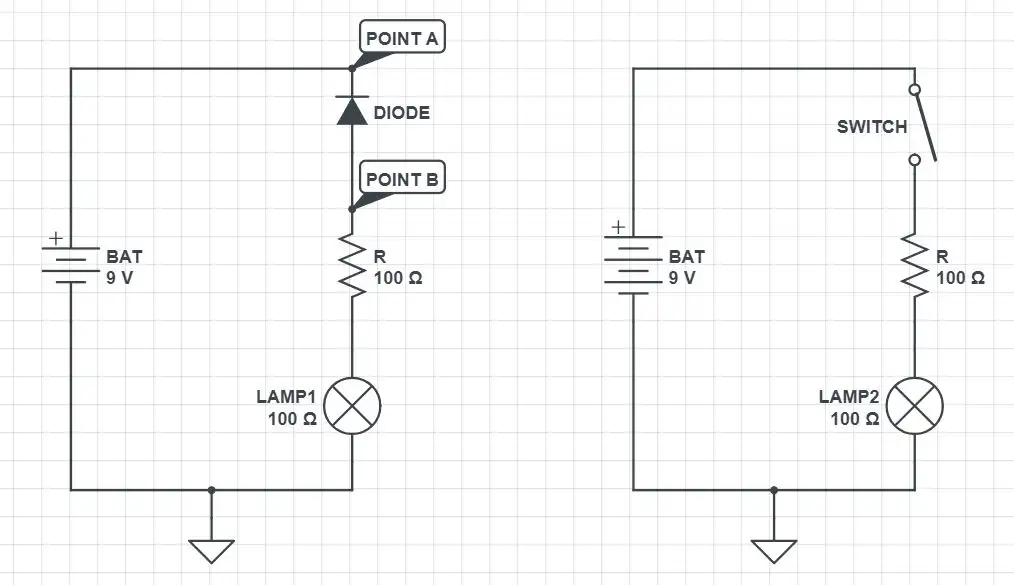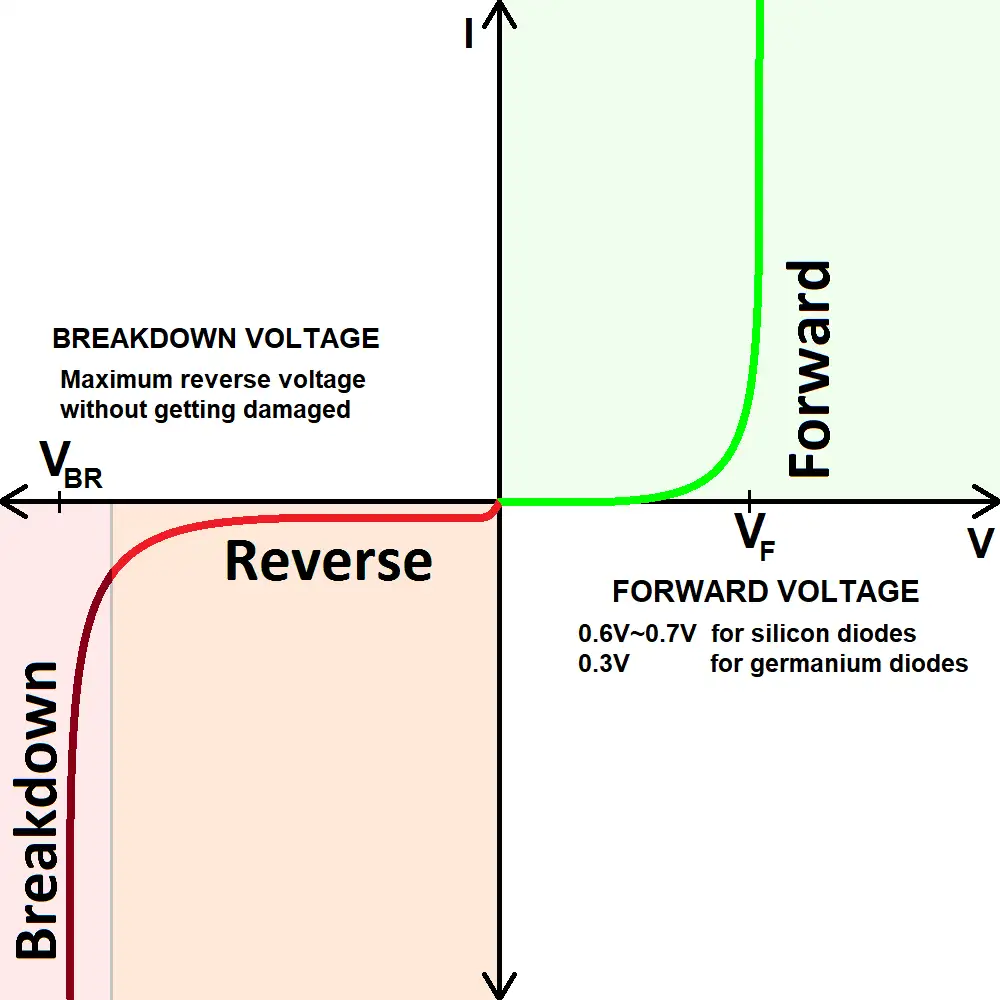Diodes & LEDs, Electronic Components, Electronics Tutorials
Electronics Tutorials: Diodes and LEDs (I)
In this post we’ll cover the diode and the LED, two of the most used semiconductor devices in effect pedal kits.
In the first section we’ll explain what is a semiconductor device, as well as some theory behind semiconductor materials. Everything is treated as lightly as possible to give you a pain-free overall idea.
1 – What is a Semiconductor device?
Unlike resistors or capacitors, both passive devices, diodes and LEDs are known as semiconductor devices. In short, a semiconductor is any material with a conductivity lower than conductive materials (such as copper) but greater than insulators (as plastic). The diodes, LEDs or transistors you’ll find [in our kits] are different kinds of semiconductor devices.Then why use semiconductors instead of, let’s say, an equivalent resistor? Because when semiconductors of different kinds are combined between them they show a range of useful properties that passive components do not: current / voltage amplification (transistors), light emission (LEDs), current flowing in just one way (diodes), resistance variation with light incidence (optocouplers) and much more!
2 – Semiconductor types
In semiconductors, current is caused by charges moving through the material. As silicon in its natural state has not a very good conductivity, we add different elements with an excess of either positive or negative charges to make it more conductive: this is known as doping. The ratio between positive and negative charges in the doped material determine the semiconductor type: neutral if it has the same positive and negative charges, positive (or p-type) if there’s more positive than negative charges and negative (or n-type) if there’s more negative than positive charges.
3 – The Diode
Diodes are two terminal devices. Like most semiconductors (and unlike passive devices like resistors or capacitors), they have a polarity: their pins cannot be reversed.Internally diodes are formed by some variation of a p-n junction (a p-type semiconductor along with an n-type semiconductor). This combination cretes some very interesting effects. Let’s discover them!
3.1 – The ideal diode
The ideal diode main function is one: to control the current direction. In a diode the electric current will only flow from anode to cathode. In the diode symbol you can see this easily, as the triangle points to the direction of the current.

Diodes can also be understood with voltages. From now on we’ll refer to the “voltage across the diode”, which is the voltage of the anode minus the voltage in the cathode. If the voltage in the anode is more positive than the voltage in the cathode (the voltage across the diode is positive), the diode is said to be forward biased and acts as a closed switch: the current passes from anode to cathode. In this example the diode is forward biased as the anode (point A) is connected to the positive of the battery, which is the most positive point in this circuit. The cathode will then have a lower voltage and the diode lets the current flow:

If the voltage in the cathode is more positive than the voltage in the anode (the voltage across the diode is negative), the diode is “reverse biased“: it acts like an open switch and the current can’t flow. Now the diode is reverse biased as the cathode is connected to the most positive point of the circuit and the anode will have a lower voltage: the diode doesn’t allow any current to flow.

To sum up,

We can also put all of this in a graphical way, and we get what we call the ideal diode response curve:

3.2 – The real diode
Real diodes have two main differences with the ideal model: Forward voltage Vf <> 0 With the ideal case we explained how a forward biased diode looked like a closed switch. This remains true with a small modification: in a closed switch we would have no voltage drop across it (it’s like a wire) but in a diode there’s always a small difference called forward voltage (Vf). This voltage is different depending on the kind of diode: it has a value of around 0.6V in silicon diodes (like the 1N914) and around 0.3V in germanium diodes (like the 1N34a). That’s why there’s a sound difference between germanium and silicon clipping diodes! Breakdown Voltage (Vbr) An ideal diode blocks the current from passing through when reverse biased. This remains true for real diodes, but if the reverse voltage across the diode is too big the diode will be destroyed and become a short circuit. The maximum reverse voltage a diode can handle is known as Breakdown Voltage (Vbr).

Maximum current Probably the most important thing to consider when building a circuit with LEDs or diodes if you don’t want to burn them. That’s why you always have to use a current limitation of some way. As we’ve seen in the previous section, once a diode is forward biased it allows the current to flow. Literally, it will let all the current that comes in to flow! If the current is higher than the maximum the diode can tolerate, it will burn. For example in the LEDs we use in our kits the maximum current is around 25mA. With the standard 1k resistor, this gives a maximum current of 9mA so it’s low enough not to damage the LED.
4 – The LED
LED (short for Light Emitting Diode) are a special kind of diode. They also control current flow from anode to cathode and have two terminals. But LEDs have one particularity: when the device is “on” and the current flows (forward biased) they produce light. The color of this light depends on the materials used in the p-n junction: different semiconductors will produce lights of different wavelenghts. That’s also why LEDs of different colors have different forward voltages:

In our store you can get LEDs with different colors to use in your effect pedal circuits!
